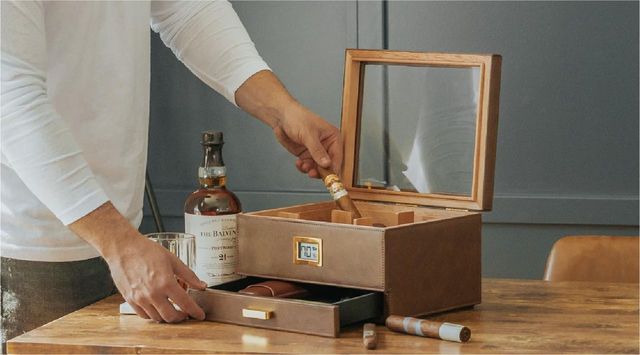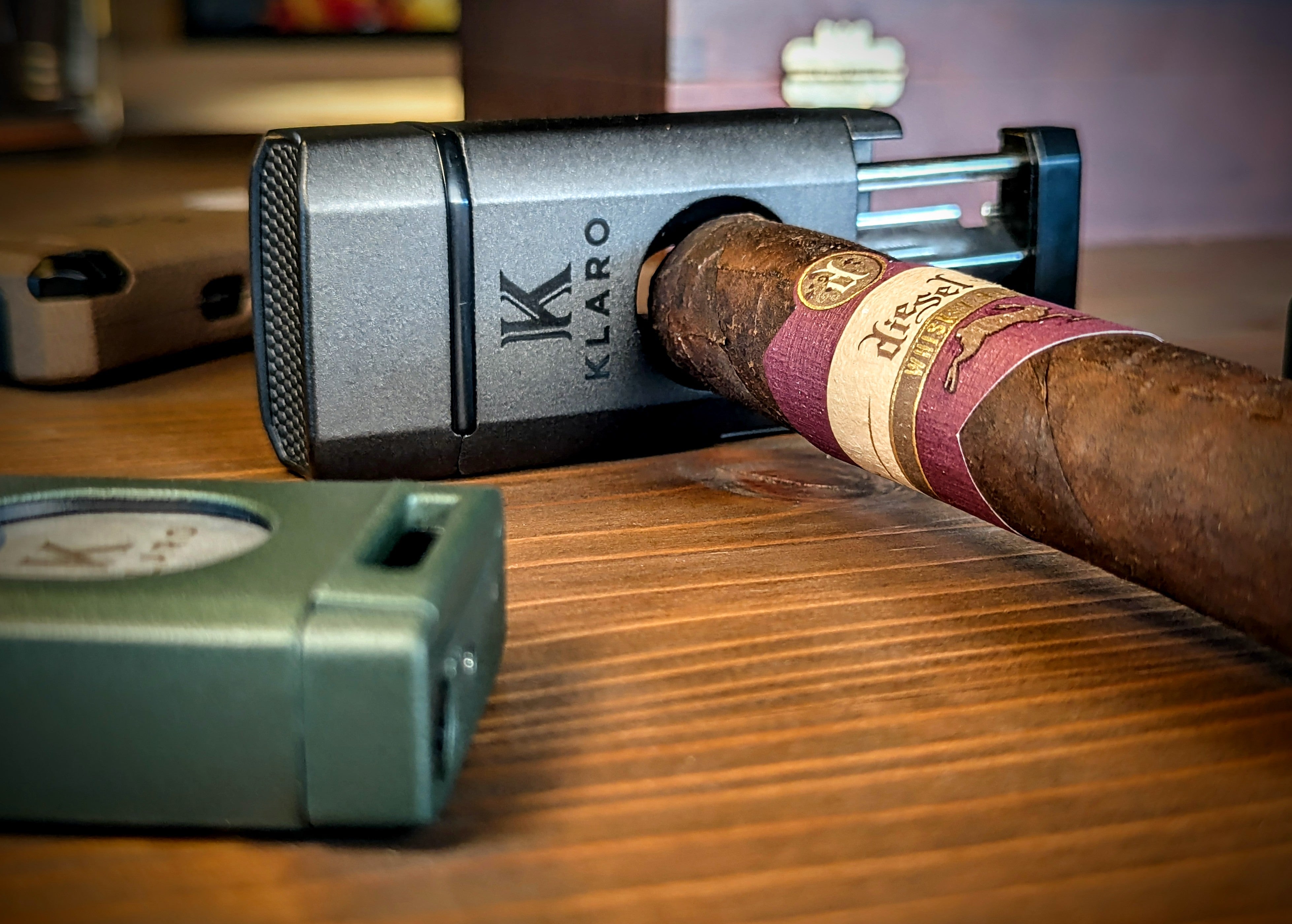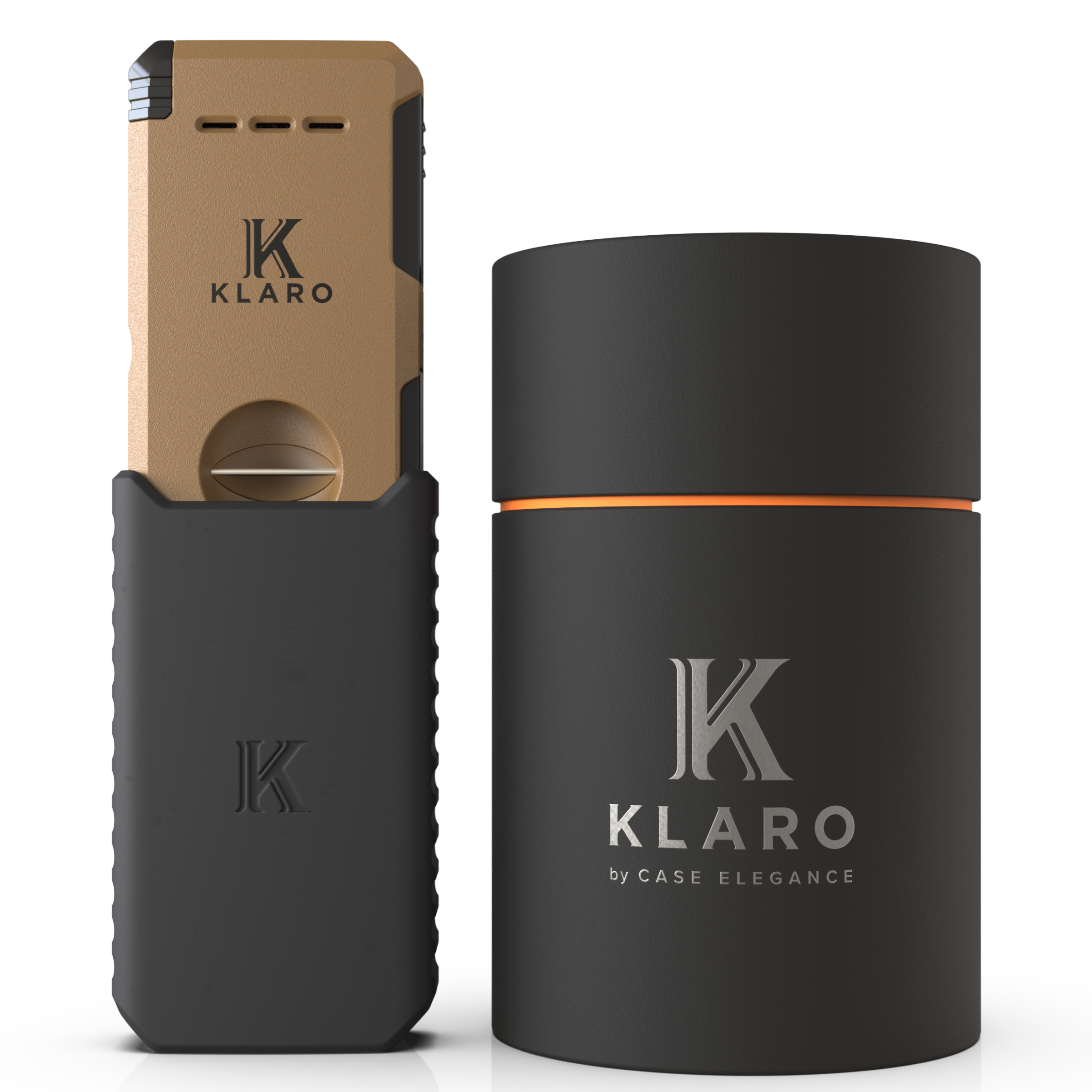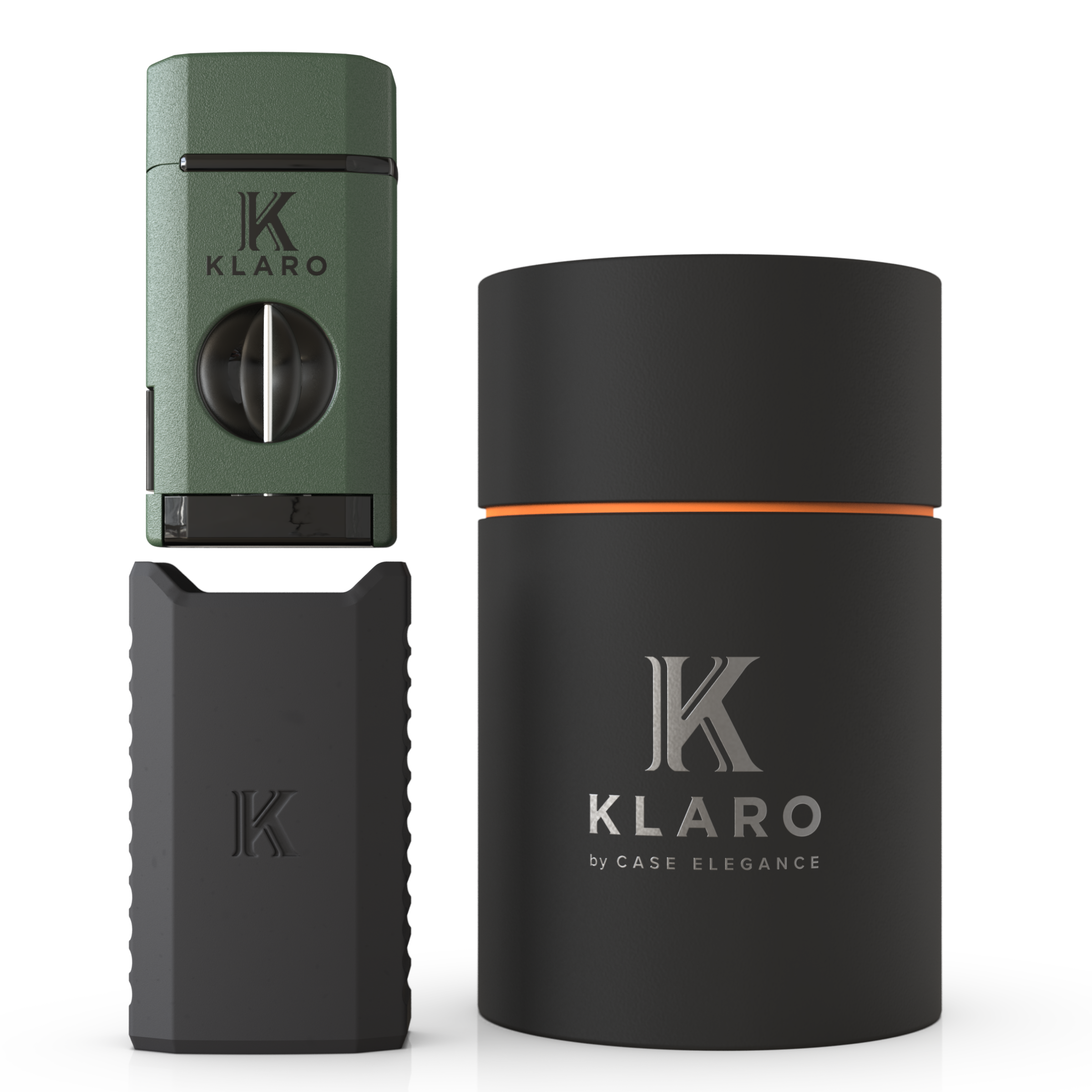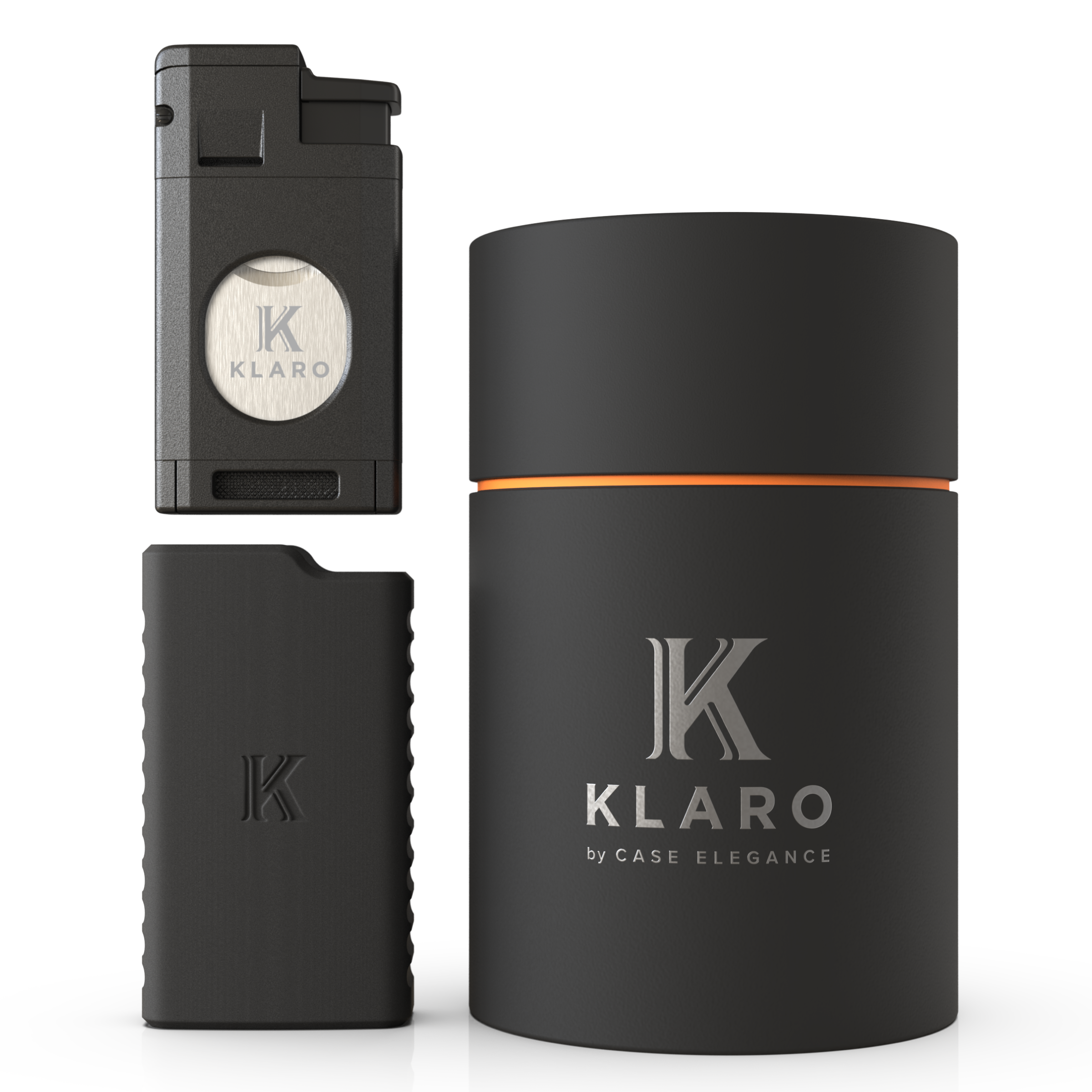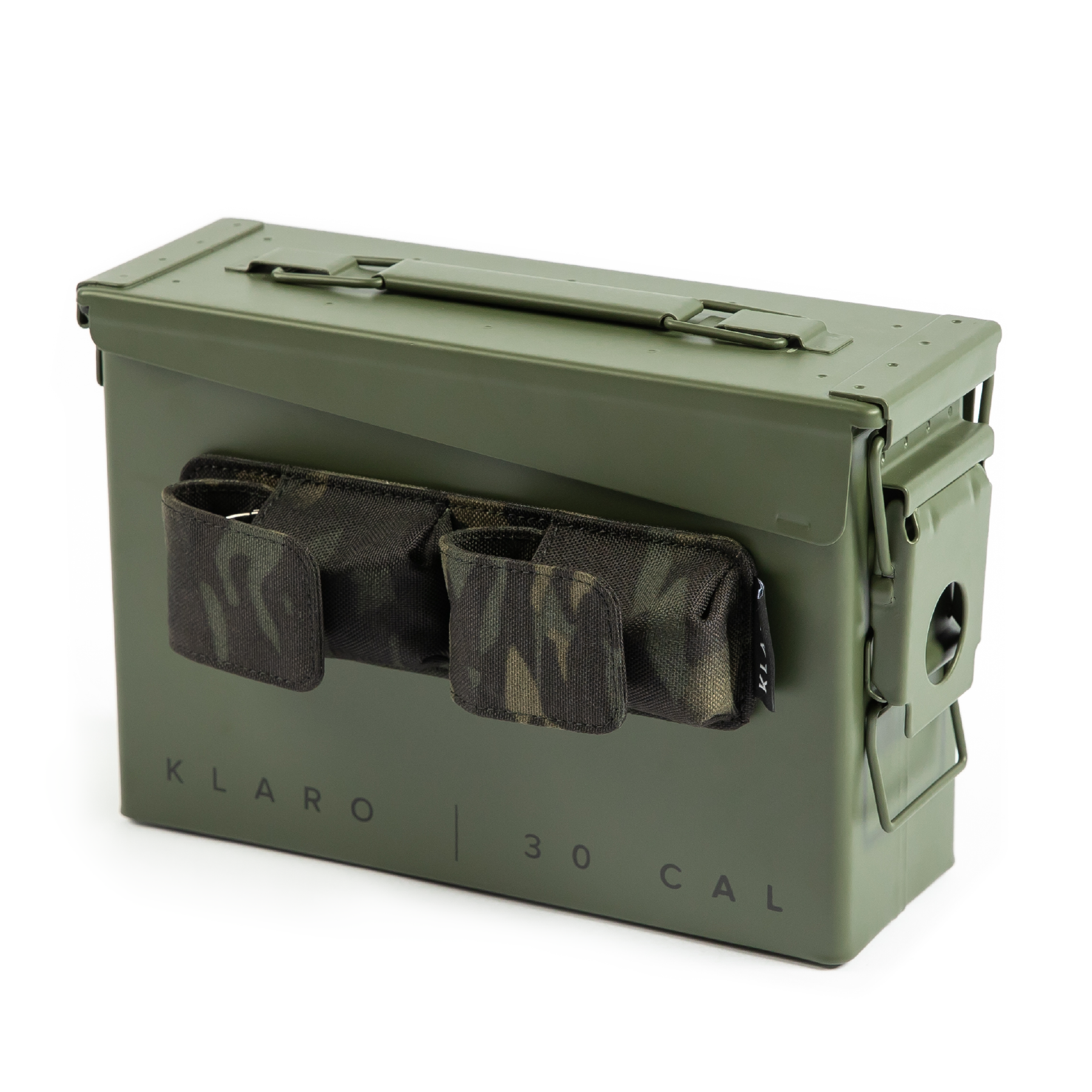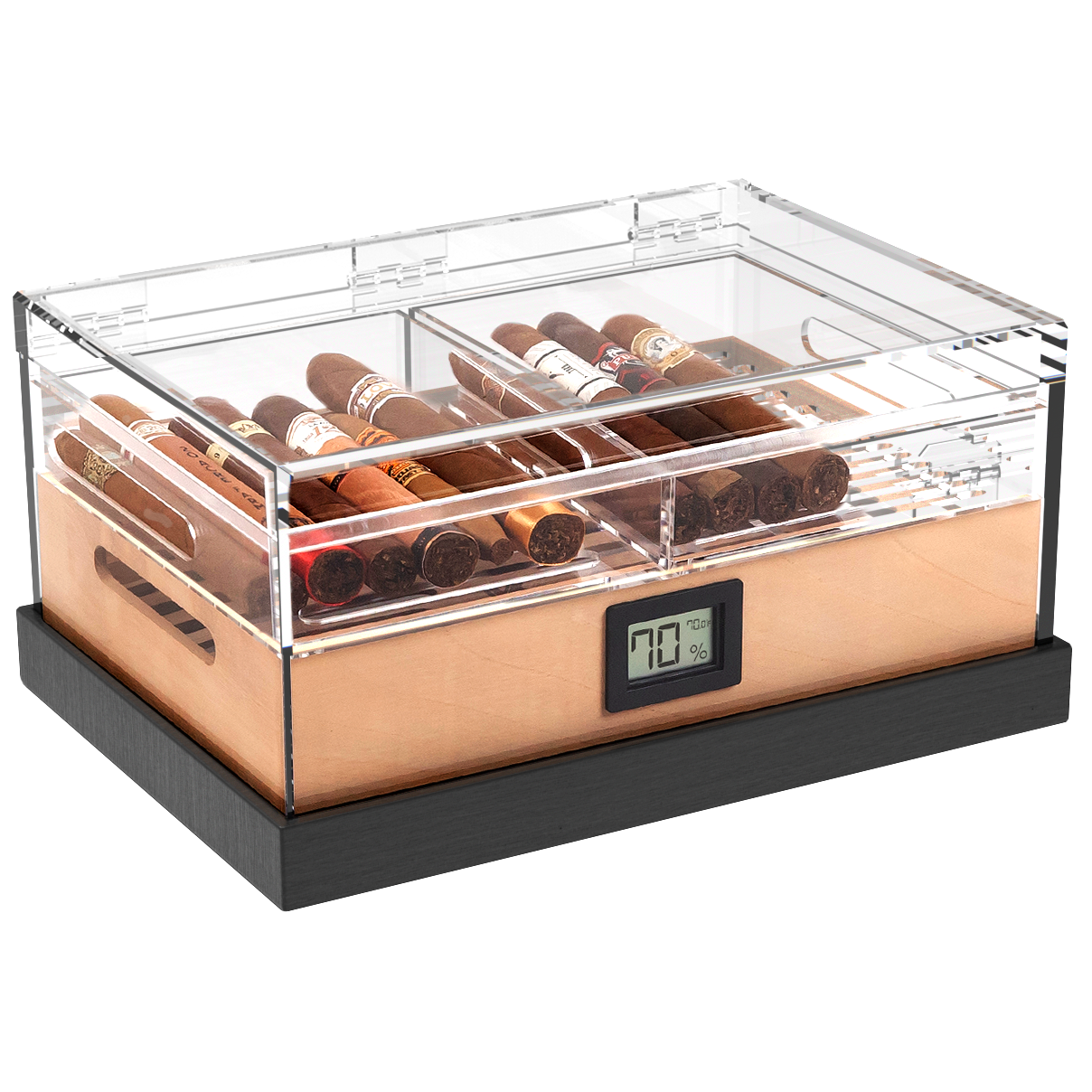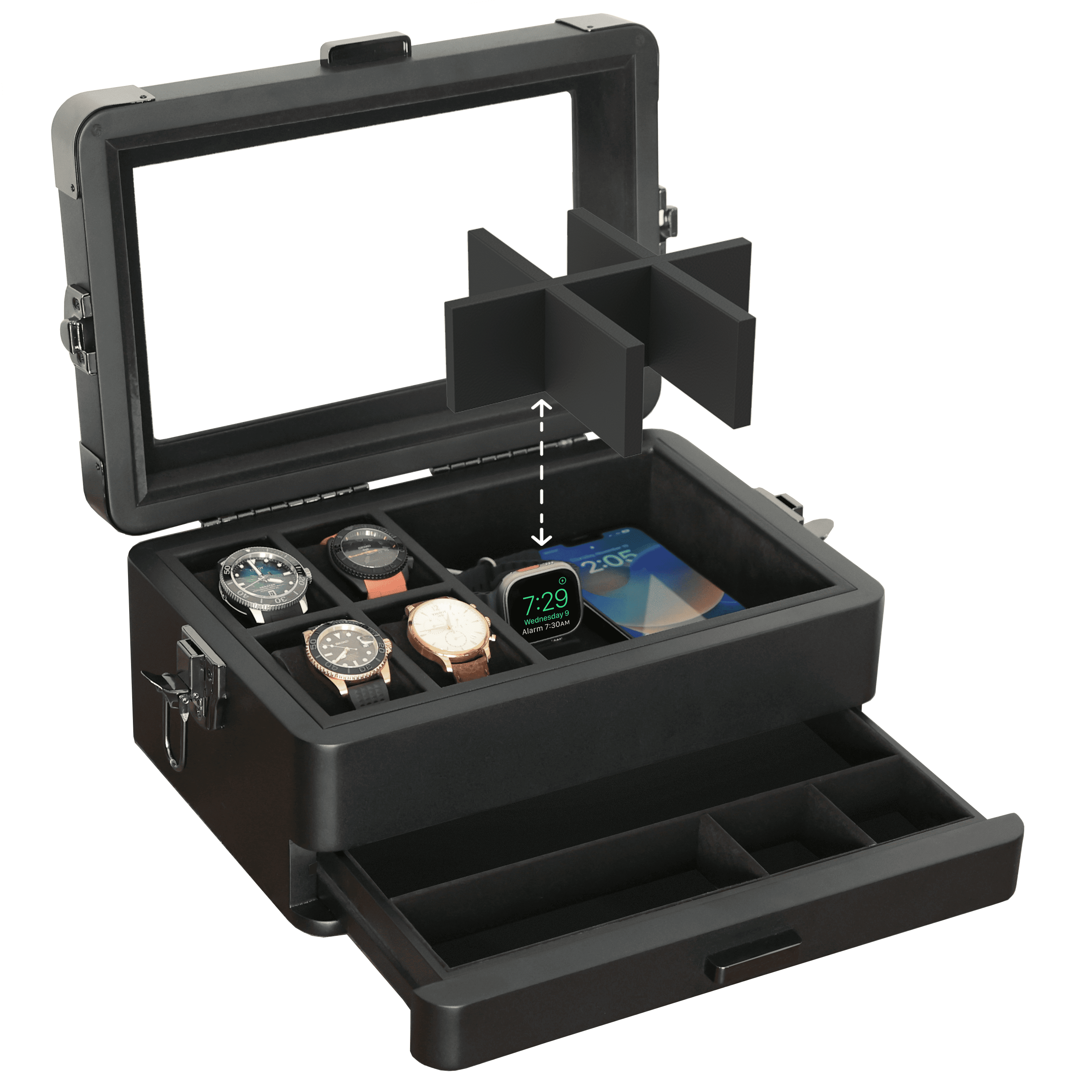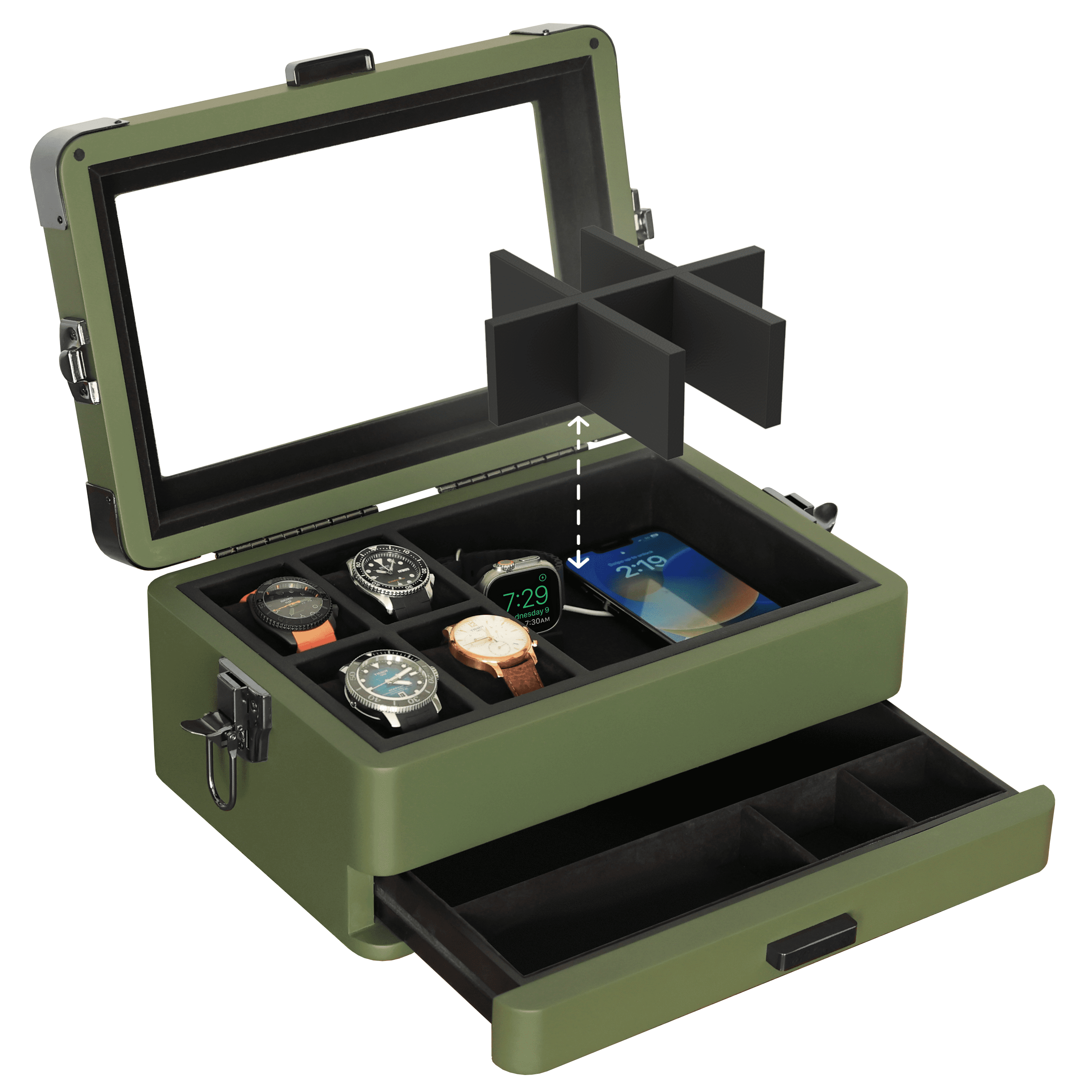A humidor regulates humidity. It ensures your cigars are stored in their optimal environment: not too humid, not too dry. While humidors primarily protect your cigars from damage—cracking from dryness, or molding from moisture—they also ensure the best possible smoking experience, so your cigar smokes as it’s intended.
Humidors should maintain the ideal humidity levels for cigars, between 65 and 72 percent relative humidity. While some maintenance is required, like refilling the humidor solution, your humidor should be able to sustain these conditions even in drier or more humid seasons. If it’s not, you’ve got a problem on your hands. Your cigars could be at risk of permanent damage.
For those cigar smokers who store fifty to a hundred cigars at a time, that’s hundreds if not thousands of dollars of cigars. Keeping them protected is a big deal!
When your humidor isn’t holding humidity, it’s likely a result of one or more of the following problems: seal issues, overcrowding, low humidor solution, or an ineffective humidification source. You can fix many of these issues, but you will need to determine if it’s a quick fix or a problem with the quality of your humidor.
We’ll explore how to determine why your humidor isn’t holding humidity.
Understanding Humidity Levels in Humidors

Experienced cigar smokers might prefer their cigars stored at slightly higher or lower levels than the standard 65 to 72 percent humidity range. They may be aging their cigars, storing especially oily cigars, or they prefer how cigars smoke at different humidity levels. Preference is one thing, but storing your cigars somewhere between 60 and 75 percent humidity keeps them safe.
Dry cigars can experience a range of problems. At best, your cigar might smoke faster than normal and the tasting notes might be off. More significant dryness could lead to canoeing, tunneling, or other uneven burns. At worst, the wrapper could crack, effectively ruining your cigar.
Moisture can cause burn issues, too, requiring you to relight your cigar multiple times during the experience, which can affect the flavors negatively. The worst-case scenario is that the overly humid cigars will mold. Which, again, is a deal-breaker.
There are two primary ways to know if your humidor is maintaining good humidity levels: by inspecting your cigars manually and by using a hygrometer.
You should inspect your cigars regardless of what your hygrometer reads. Dry cigars will crack when pinched, and you should be able to detect the dryness audibly. Cigars that are too wet will feel doughy and won’t have a spring when you squeeze them. Regardless of your hygrometer reading, if your cigars are coming out dry or wet, you have a humidity problem.
A hygrometer measures the relative humidity within your humidor. Whether your humidor has a built-in hygrometer or you’ve manually placed one inside, the reading should indicate if your humidor is properly maintaining the humidity levels you want. Hygrometers can certainly malfunction and provide false or affected readings. Part of your problem-solving will include determining if the hygrometer reading can be trusted.
However, if your hygrometer is reading low and your cigars show signs of dry cigars, you know you have some kind of a humidity problem.
Causes of Humidor Not Holding Humidity

So why would your humidor be too dry? Well, it’s either losing moisture or it doesn’t have enough reserve moisture to offset dry conditions, which could be caused by several factors. Consider the following common issues:
Inadequate Seasoning
Seasoning refers to the amount of humidity stored within the Spanish cedar or whatever other material is inside the humidor. When you season a humidor, you bolster that wood with excess moisture. (That’s why Spanish cedar is commonly used; it stores excess humidity and releases it when conditions are dry). If the wood doesn’t have enough moisture, there’s nothing to release when the conditions are dry.
If your humidor continually struggles to hold humidity levels, you may need to season your humidor again to bolster that wood with additional moisture.
Poor Seal or Leaks in the Humidor
A poor seal or leaks in the humidor compromise its ability to maintain consistent humidity. If the lid doesn’t close tightly or there are gaps, moisture escapes, making it difficult for the humidifier to stabilize the environment. You can inspect the seal visually, but we recommend using the “dollar bill test” to identify gaps: place a dollar bill on the seal, close it, and pull to identify any location where the bill releases.
A tight seal is critical to preserving cigars at their optimal condition. If your seal has been compromised, it may be time to invest in a new humidor.
Incorrect Hygrometer Readings
As mentioned, a faulty or uncalibrated humidor hygrometer can misrepresent humidity levels. You can’t effectively adjust or monitor the humidor’s internal environment without accurate readings. The trouble is that hygrometers can’t be effectively calibrated at home. This should be done professionally.
If you suspect your hygrometer’s reading is incorrect, inspect the seal to see if outside air may be entering your humidor. Also consider the placement of your hygrometer, as this also may be affect its reading. For example, a hygrometer placed close to the humidifier may cause a higher humidity reading. Or visa versa. If the reading can be attributed to these factors, the hygrometer may not be faulty.
Issues with Humidification Devices
Humidification devices that are underperforming, overfilled, or improperly maintained can result in fluctuating humidity. If the device isn’t distributing moisture evenly or has dried out, it will fail to regulate the humidor. Check the device regularly, refill it with distilled water or humidor solution as needed, and clean it to ensure consistent performance.
Temperature and Humidity
External temperature and outside humidity can significantly impact a humidor’s ability to maintain proper levels. Extreme heat or cold and low ambient humidity can make it harder to sustain ideal conditions inside the humidor. Keeping your humidor in a climate-controlled environment away from direct sunlight, vents, or drafts helps minimize these external influences.
But keep in mind where you live, the season, and how these can affect general humidity (and your humidor). Those who live in dry, arid climates may require more frequent humidor solution refills. The same goes for those in frequently cold, dry climates, or those storing cigars through the winter.
Humidor Size vs. Cigar Capacity
Overfilling a humidor can block airflow and prevent proper humidity distribution. Meanwhile, an underfilled humidor could allow excessive airflow, drying out cigars (though this is far less likely). It’s important to match the humidor’s size to its cigar capacity, ensuring adequate space for proper circulation while avoiding excessive empty space that can make humidity levels harder to stabilize.
Rotating your cigars is an important step to help even an adequately stocked cigar case and certainly an overcrowded one. Rotating cigars will allow each of them to have closer proximity to the humidifier, which should help maintain that homeostasis.
Troubleshooting Humidor Seasoning Issues

Being proactive about your humidor’s health can prevent issues before they occur. For instance, seasoning is paramount to preventing humidity issues with your humidor; it bolsters the wood to respond to drier conditions. When you buy a humidor from Case Elegance, you will find detailed seasoning instructions for each specific model.
Humidor seasoning itself is quite simple, as the purpose is to provide moisture reserves in the wood, which happens naturally with Spanish cedar. Re-seasoning an old or dry humidor may also help improve its performance if it has lost moisture content over time.
Seasoning an old humidor is usually done to recondition it after a period of disuse or when it’s dried out. The process is similar but often requires less time because the cedar has already been conditioned to some extent. In this case, you may simply add a bowl of distilled water or a seasoning pack and monitor humidity for a shorter stabilization period (usually a week). Wiping the interior is optional, as the wood likely already has a base level of moisture.
When seasoning, be careful to make the following common mistakes:
Over-saturating the Wood: Applying too much water or spilling and leaving standing water in the humidor can warp or damage the cedar.
Using Tap Water: Tap water contains minerals and impurities that can cause mold or residue to build up inside the humidor. Always use distilled water or propylene glycol.
Rushing the Process: Humidors require time to stabilize. Opening the lid too often or skipping humidity monitoring can lead to inconsistent conditions.
Neglecting the Hygrometer: Failing to calibrate or check the hygrometer can cause inaccurate readings, leading to over- or under-humidification.
Inspecting and Fixing Humidor Seals
A properly functioning seal is essential for maintaining consistent humidor humidity. A compromised seal allows moisture to escape, making it difficult to regulate humidity and keep cigars fresh. It can also lead to false readings from your hygrometer, which might lead you to make adjustment mistakes. Let’s discuss seals in great detail.
How to Check for Leaks or Gaps in the Seal
There are several quick and easy ways to check the quality of a seal. Earlier, we mentioned the dollar bill test, which is an effective way to test the seal. Simply close the humidor lid with a dollar bill partially inside and gently tug on it. Resistance indicates a good seal, while little to no resistance suggests a gap. You should repeat this test around the perimeter of the lid.
Next, examine the edges of the lid and body for visible gaps, misalignments, or warped wood. A visual inspection can help you catch damage caused by bumps, drops, or any other unintended force.
DIY Seal Fixes
While a bad seal is a serious issue—and the reality is that you may need to replace your humidor—there are a few last-ditch efforts to make that may fix the problem. Here is a step-by-step walkthrough.
First, check the hinges. Loose hinges can prevent a tight seal. Tighten screws with a small screwdriver to ensure the lid closes snugly.
Next, consider adding a piece of weatherstrip or foam seal to the lid. Just be careful not to affix the lid to the actual humidor with any addition. Simply apply a thin adhesive weatherstrip or foam tape around the lid’s edge to create a tighter seal. You might also use a specialized wax to fill minor gaps and improve the seal without damaging the wood. If the wood has warped, sanding the edges lightly and reapplying a protective finish can restore the seal.
You should only try these methods as a last-ditch effort and you are no longer worried about potentially damaging the humidor. More often than not, you will need to replace the humidor completely.
Other Reasons to Replace Your Humidor
So how do you know when the problem with your humidor is bad enough that you need a replacement?
-
Severe Warping or Damage: If the lid or body is warped beyond repair, the humidor will no longer maintain humidity.
-
Persistent Leaks: If all attempts to repair the seal fail, replacing the humidor is the best option to ensure your cigars are properly stored.
-
Mold Issues: Mold inside the humidor, especially if it penetrates the wood, is often irreparable and unsafe for cigars.
- Outgrown Capacity: If your collection exceeds the humidor’s size, and you are having trouble maintaining humidity due to the quantity of cigars, it may be time to invest in a larger model.
By regularly inspecting and maintaining the seal, you can prolong your humidor’s life and keep your cigars in pristine condition.
Issues with Humidification Devices

Issues with humidification devices may be attributed to low humidity levels. Understanding device types, maintenance, and replacement ensures your humidor performs at its best.
Types of Humidification Devices and Their Differences
There are several popular types of humidification devices, each offering unique benefits and drawbacks. You may be familiar with sponge or foam-based devices that are affordable but require frequent maintenance and may not distribute moisture evenly. Gel-based devices last longer and self-regulate humidity to some extent, making them a popular choice for beginners. This is what you will find with many Klaro humidors (refillable with a Klaro Membership). Bead-based systems provide exceptional consistency and are reusable with proper care. Meanwhile, electronic humidifiers offer the highest precision and are ideal for larger humidors.
The humidification device in your humidor largely depends on the size of your humidor and the level of control you want over the humidity. Understanding these differences helps ensure your cigars are properly preserved.
How to Maintain and Refill Humidification Devices
Proper maintenance of your humidification device is essential to ensure consistent performance. For sponge or gel-based devices, regularly inspect and refill them with distilled water or a propylene glycol solution to maintain optimal humidity. Bead-based devices should be rehydrated when they appear dry but not oversaturated.
Electronic humidifiers require occasional cleaning of sensors and fans, along with refilling their reservoirs. Always follow manufacturer instructions for maintenance to prolong the life of your device and ensure a stable environment for your cigars.
When to Replace Your Humidification Device
Temporary humidification devices have a finite lifespan and should be replaced when they can no longer maintain consistent humidity levels. Foam and sponge devices typically degrade over time and may lose their ability to retain moisture effectively. Gel packs can dry out and become brittle, signaling the need for a replacement.
Beads may lose their porosity but tend to hold out longer if you routinely add humidor solution as needed.Finally, electronic devices can experience sensor or mechanical failures. If you notice persistent fluctuations in humidity, even after maintenance, it’s likely time to replace the device. Regular monitoring of your humidor’s humidity and the condition of your device ensures your cigars remain in perfect condition.
Upgrading and Maintaining Your Humidor

Knowing when to replace your humidor is a matter of determining when the effort to maintain humidity is too cumbersome or more expensive than purchasing a new device. Or if your humidor is putting your cigars at risk of permanent damage. By routinely maintaining your humidor, following recommended steps for reseasoning, replacing the humidification device, or adding humidor solution, you can better and more quickly identify issues that mean your humidor will no longer function as it should.
Owning a humidor shouldn’t require extensive work on your part. Instead, a quality humidor box will regulate humidity to protect your cigars and ensure they are in their best smokeable condition whenever you choose to partake. While some troubleshooting may be required, you shouldn’t feel as if you are consistently fighting your humidor to hold the proper humidity levels to keep your cigar safe. Use these tips and know when it’s time to buy a new humidor.
To learn more about your humidor and how to maintain it, check out the following resources:
- What is a torch lighter and why do you need one?
- What is a humidor?
- How long do cigars last in a humidor?
- How to fill a butane lighter
Have you experienced issues with your humidor holding humidity? Let us know in the comments below.

